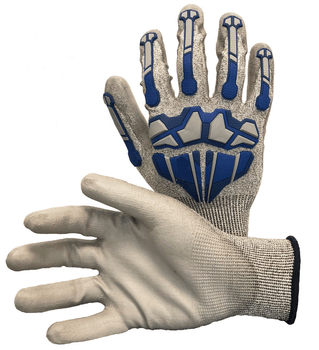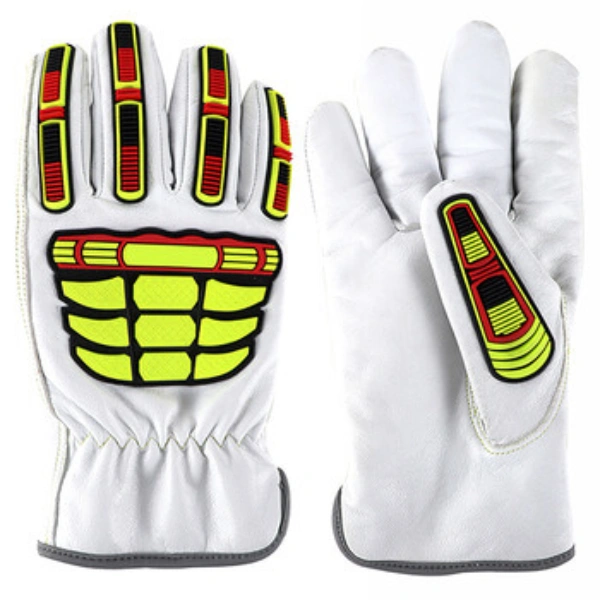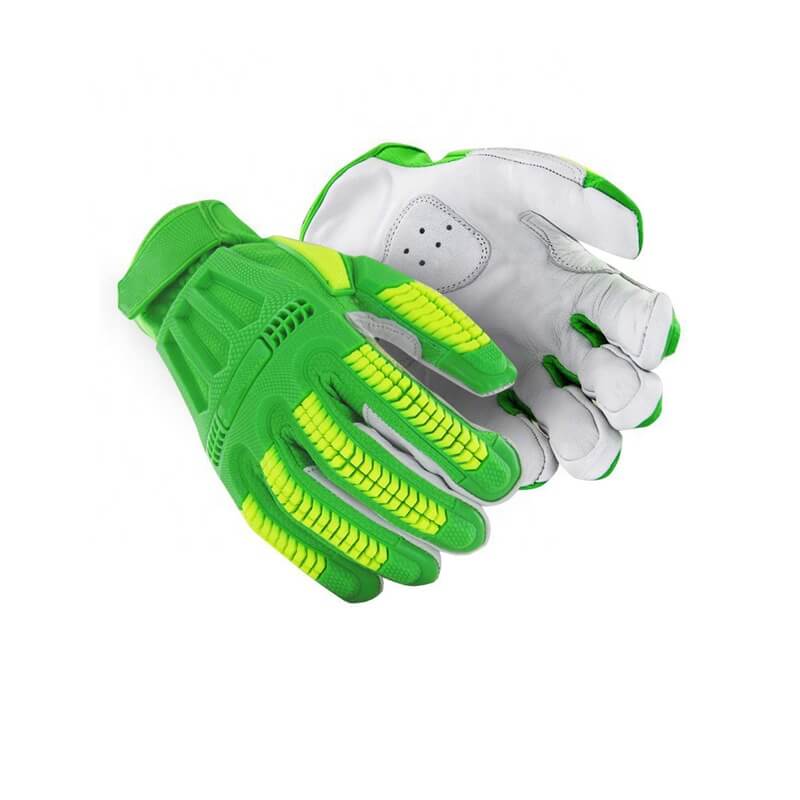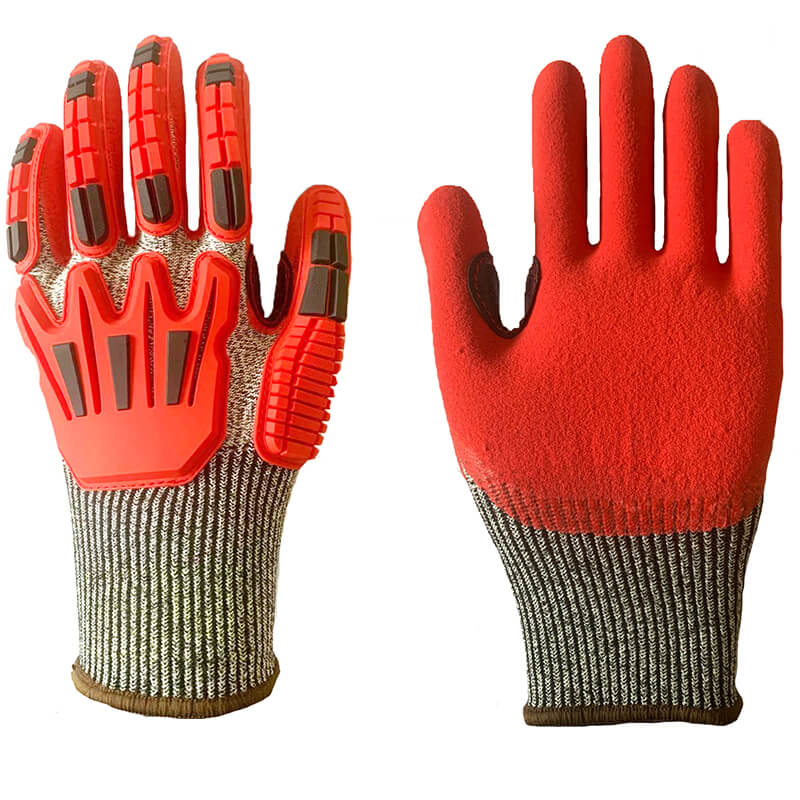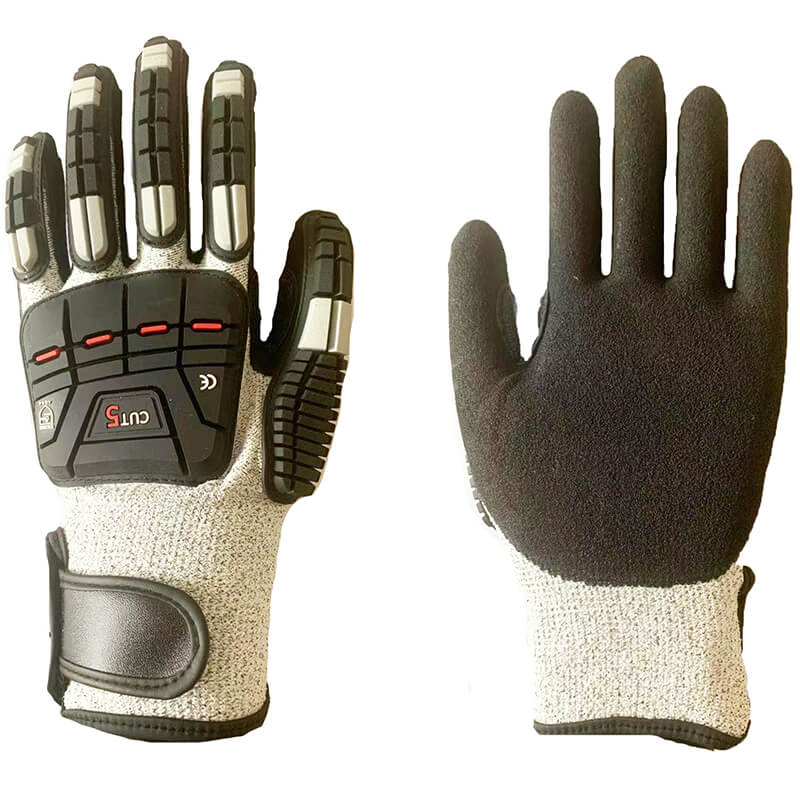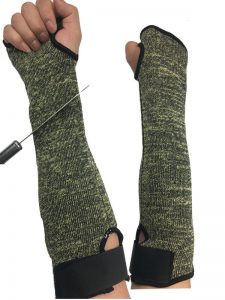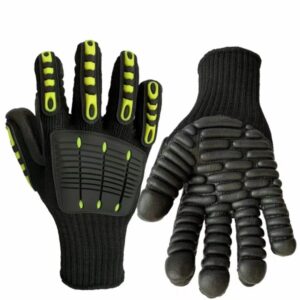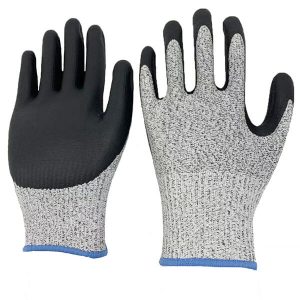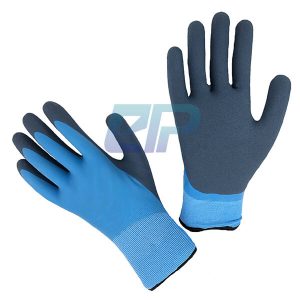Material composition and properties of Anti-impact gloves.
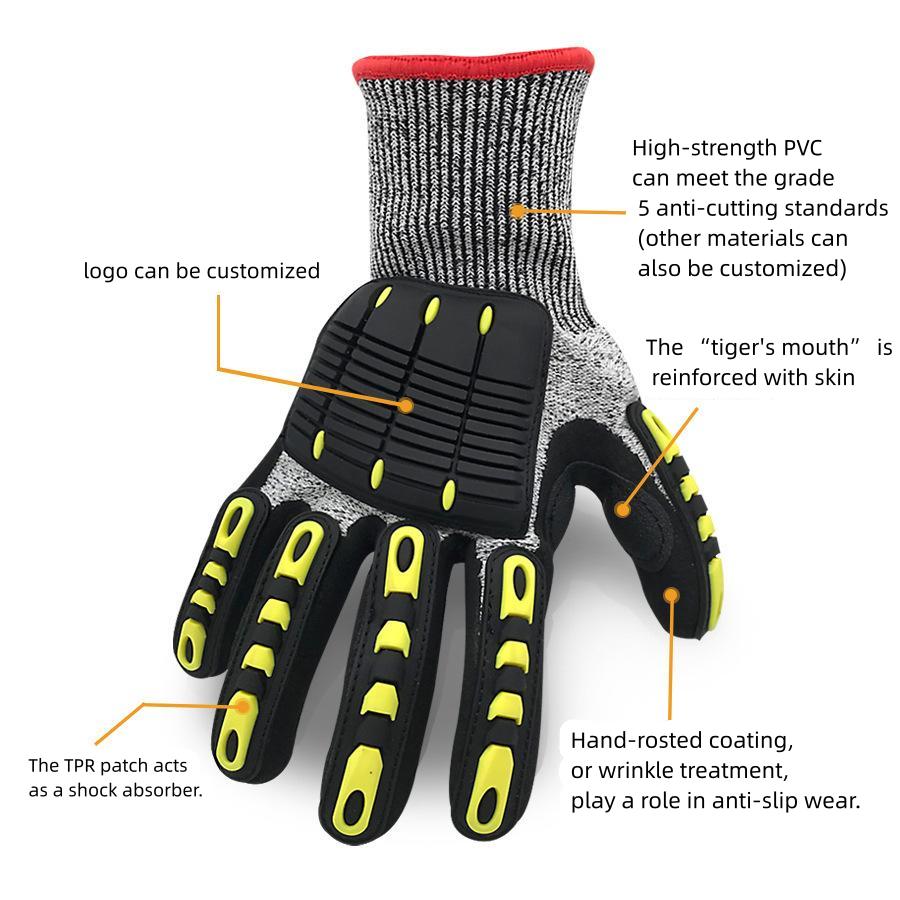
1. What is Impact Resistant Materials
Anti-impact gloves are high-end labour protection gloves. The composition of the anti-impact material is a rubber reinforcement of TPR. The Thermo-Plastic-Rubber material is a thermoplastic rubber material. It is a kind of thermoplastic soft rubber compound that has rubber elasticity does not need to be vulcanized and can be directly processed (such as injection moulding, extrusion, blow moulding, etc.).
2. What is TPR and what does it do?
- The TPR material is based on thermoplastic styrene-butadiene rubber (such as SBS, SEBS), adding resin (such as PP, PS), filler, plasticizer and other functional additives blending modified materials.
- Depending on the mould, it is made into different shapes and then sewn on the glove liner to provide cushioning. The durability of the 3D TPR finger and back-reinforcing gloves protects the hands and joints from accidental injury.
- TPR is generally used in fluorescent high-visible colors to avoid the danger of working in dark environments. The liner of the glove can be made of polyester, nylon or cut-proof HPPE material. Both the palm and the tip of the finger are dipped and the different coatings are suitable for different working environments.
- It also enhances the firmness of the inner knit gloves. At the middle of the thumb and index finger of the glove is often thumb reinforcement. The cortical material is commonly used, and the Kevlar suture is sewn. Thumb reinforcement will effectively form a reinforced structure that protects the palms and protects the palms of the hands from the impact of dry strength shocks.
3. what are TPR anti-impact work gloves used for?
- TPR anti-impact work gloves are widely used in natural gas drilling, oil exploration, natural gas exploration, urban construction, mining operations, heavy industry, security industry, etc.
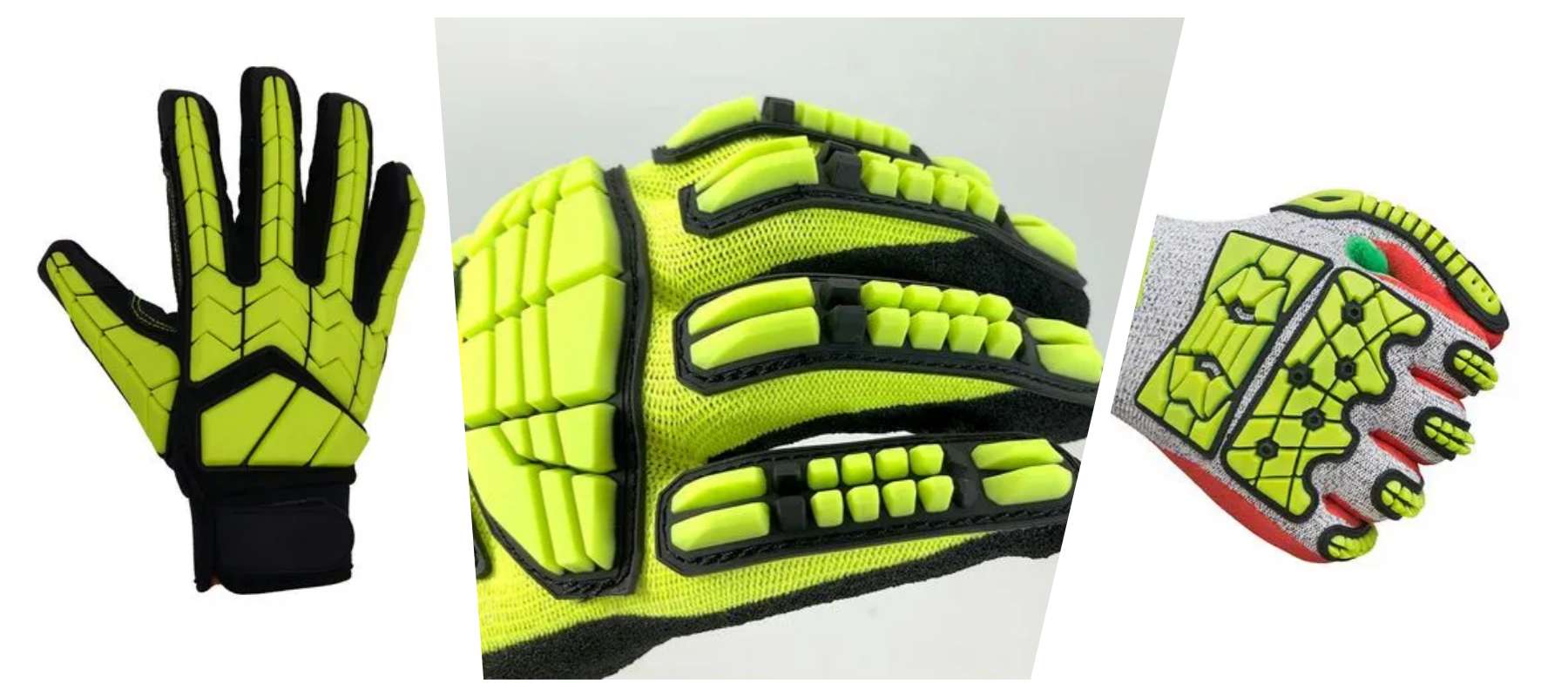
TPR shapes can be customized according to customer needs.
What types of Anti-impact materials are available?
- Anti-impact material gloves have been introduced to protect workers from all sorts of injuries. Just like what its name suggests, these gloves can deflect impact away from the hands and reabsorb that energy in their materials. They offer extra protection from arc flashes as well.
- The typical anti-impact material can be made from a combination of different materials such as leather and plastic rubber with thermal capabilities to create work gloves that protect the hands without sacrificing their tactile functions and dexterity.
- Today, there is a wide range of materials used to make anti-impact gloves such as Kevlar. Kevlar is a kind of lightweight fibre that has resistance to a variety of external factors such as cuts, impact, heat, and flame.
- Another material that you can find as an impact-resistant material is PVC. This material, just like Kevlar, is also lightweight but is also resistant to abrasion. It can be a good glove material due to its strong mechanical properties and mouldability. That means this material can be shaped into different styles without affecting its dexterity and lightweight benefits.
- Not all impact-resistant materials are fabricated. There are also materials like goatskin that have natural anti-impact properties. Goatskin is touted as the strongest and the most long-wearing of all types of leather out there. Not only does it have impact-resistant properties, but it also has lanolin, which makes the gloves feel supple. Lanolin also keeps water out and contributes to the abrasion-resistance properties of goatskin.
- You can also find HPPE rubber anti-impact material. It comes in various levels. The higher the level, the more impact protection it can have. Higher levels of HPPE material are also waterproof, so they are great for industries that deal with water products all the time.
What types of impact gloves are available on the market?
1. Impact gloves oilfield
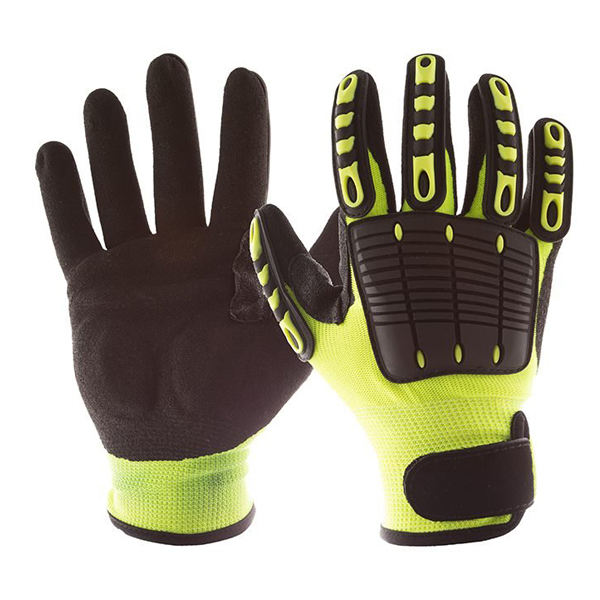
- The gas and oil industry often see hand-related injuries. It’s not surprising considering the nature of the job, which often handles materials and equipment that can inflict injuries to the hands. There is always a risk for workers in the oilfield industry to hurt themselves because they are handling things like pipes and heavy-duty equipment all the time.
- These injuries often lead to time lost at work and the inability of workers to render services and earn a living. It can also affect the industry. Absences can reduce work output and may even put companies at risk of liabilities and lawsuits. This is where using impact gloves oilfield comes in.
- Today, impact gloves for the oilfield industry can now be used to protect workers dealing with said materials and equipment daily. They are designed to cushion the hands and protect them from impact but without affecting their function. They are made from materials that are lightweight but can deflect impact and even protect the hands from cuts and abrasions.
- Impact gloves for oilfields are different in such a way that they are more close-fitting than other gloves so that nothing snags and catches in heavy-duty machinery. They are also more resistant to oils and often have a waterproof coating or lining that prevents the hands from being soaked.
- Impact gloves for oilfield use also have an exterior coating that will improve grip. This way, even when handling small and slippery objects that are coated in oil, handlers still won’t drop them.
- Kevlar is a material that is often used for this type of glove. Due to its strength and impact resistance, it has often been relied on to provide ample protection to the hands. Goatskin material is also a preferred material in the oilfield industry due to its natural waterproof and oilproof functionality.
2. Impact-cut-resistant gloves
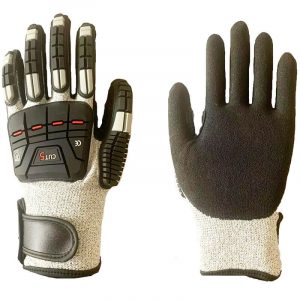
- Impact-cut-resistant gloves protect from both cuts and impact. With most injuries accounting for 30% of time lost, employees must be protected from them. These gloves are designed to deflect blow and impact to the hands when working with tools like hammers. They also protect the hands from sharp objects such as knives.
- There are different types of materials used for impact cut-resistant gloves. There are three basic kinds of cut-resistant gloves today. The first is the metal or chainmail gloves. These are rings of stainless-steel material hooked with each other to create gloves that will protect the hands from injuries. The second one is called the cut-and-sewn gloves. These are made from pre-cut materials that are sewn together into a glove. The third is called the seamless knit glove. It is fabricated in one piece using moulds and made from yarns with the highest strength.
- If the cut-resistant gloves are not made from chainmail stainless steel, it is most likely made from a type of yarn fabric. The most commonly used is the Kevlar fibre. It is lightweight and can provide you with a high level of hand protection against injuries. High-performance polyethene yarn is also used as an alternative or as an accompaniment to Kevlar. Under HPPE are the materials Dyneema and TenActiv. Dyneema, particularly is 20 times stronger and more resistant to abrasions and cuts compared to regular fibers. It is also more cost-effective, which is great for companies that might be on a budget.
- Kevlar, on the other hand, not only protects the hands from cuts and abrasions, but it can also repel chemicals and offer a good grip. They are also flexible and won’t affect the dexterity of your hands, great for industries that need to work on smaller objects.
3. Winter impact gloves

- When the cold season sets in, it’s time to switch to winter impact gloves. Regular impact gloves might not cut it when it comes to protecting the hands from both impact and the cold. With the help of winter impact gloves, the hands can be protected from the outdoor elements.
- What makes winter impact gloves different from the others is their thermal outer layer. Some are made from Kevlar and combined with a thermal fabric to keep the hands protected from frostbite. The Kevlar material takes care of the protection against impact, cuts, and abrasions.
- Winter impact gloves are thick enough to protect thermal protection but thin enough to provide hand dexterity. Today, you can find many winter impact gloves that still enable easy handling of touchscreen devices, so you don’t have to slip your gloves on and off.
- These gloves are also designed with comfort in mind. Users can wear them for extended hours and not deal with hand cramps or fatigue. They are just as comfortable as thinner gloves out there, so workers won’t feel the need to remove their gloves in the middle of work.
- Goatskin is also a popular winter impact glove material due to its natural thermal properties. As a leather type of material, it can impart warmth to the hands. It prevents external cold drafts from seeping inside the hands.
- Winter impact gloves are also water-resistant. Some parts of the gloves that are usually exposed to moisture are integrated with additional materials that can prevent water from getting inside. Best of all, they usually sport fingertip patterns and external coating to provide a superior outer grip. Users won’t have a problem working with sensitive and fragile objects because the gloves can prevent slipping.
- These winter work gloves can be machine-washed as well. They can be used all winter long and then hidden for storage to be used again in the next winter season.
4. Waterproof impact gloves
- When buying impact gloves, it’s also important to consider waterproof features, especially when the gloves are going to be used for applications that require frequently submerging the gloves in water. Regular gloves might not work that well when it comes to repelling water. When water seeps into the material of the gloves, the hands could get soaked. This can lead to a host of other problems such as moisture retention, smelly gloves and even exposure to chemicals and bacteria.
- If you are looking for impact gloves with water-resistant properties, try the ones with nitrile coating. Nitrile coating can also be found in regular disposable gloves such as the rubber gloves you typically see in your grocery stores. These are used for food handling and cleaning because they effectively prevent water from getting inside the gloves.
- But while nitrile-coated gloves are effective in keeping water at bay, they are also effective when it comes to protecting the hands against cuts, impact, and abrasion. When used as an external coating and partnered with materials like HPPE and Kevlar, that can be a good combination to prevent exposure to both impact and moisture.
- Sandy-coated nitrile gloves also help improve grip and dexterity. This type of glove has a grittier surface so that it can hold on to objects that tend to be slippery, which is great when you are also working with water.
- Another material frequently relied on for its waterproof functions is goatskin. This leather material has a natural ability to repel water, so it is useful as a lining. It also has an intrinsic ability to protect the hands against cuts and abrasions, which is why it is a preferred material for making gloves.
- PVC gloves can also be used. It is also the same material used for plumbing systems, which is why it also works as a material for waterproof gloves.
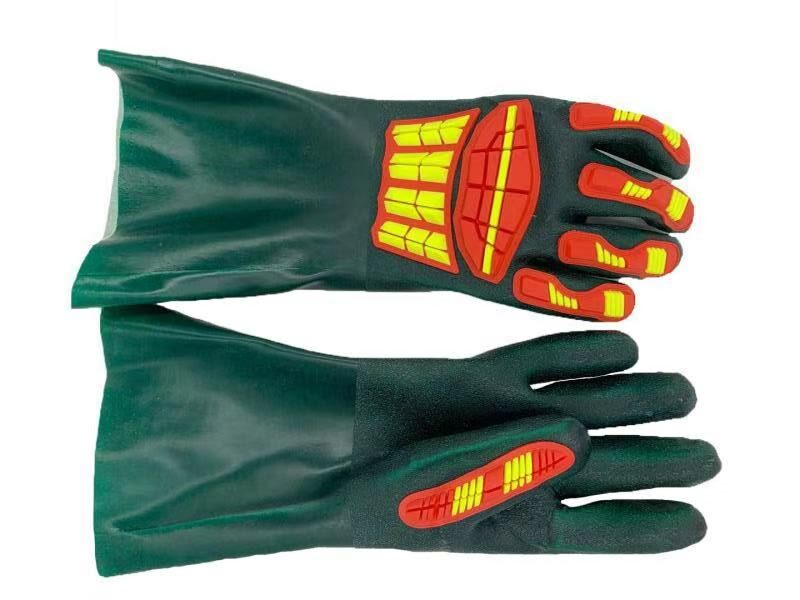
6. Insulated impact gloves
- It’s important to understand the impact of frigid weather on exposed body parts when working. In the winter season, frostbite is a common cause of injuries. This can inflict severe damage to the nerves of the hands, which is why workers must wear the right gear to prevent this from happening.
- Insulated impact gloves are the same as winter impact gloves. These are designed to provide warmth and thermal comfort when working in the winter season. There are three ways a good insulated impact glove can do this. First, these impact gloves have a shell or an outer coating that repels wind and water. Doing this will prevent the hands from being exposed to outside elements. Next, an insulating or thermal layer is used as an inner liner to prevent cold air from passing through the fibres of the material used for the outer shell of the insulated impact gloves. Aside from trapping cold air, it also has a waterproof benefit that ensures the hands won’t be exposed to cold water while being used. Aside from that, its comfort and its close fit will also help in providing warmth. If the material is thin or the gloves are too big for your hands, you might not get the comfort that you need.
- When buying thermal work gloves, look for thermal liners. It can be a fleece liner or a goatskin liner. Today, you can find materials such as quad layers and terry liners used as insulating materials for work gloves. When coupled with materials such as HPPE and Kevlar, it can be an effective work glove that can also protect your hands from impact, cuts, and abrasions.
- Proper-fitting gloves are as vital as winter gloves. Your insulated work gloves should also have a good cuff fit to prevent snow and wind from getting in your gloves.
7. Rubber impact gloves
- Rubber gloves have come a long way. Today, many industries benefit from the use of rubber gloves, particularly rubber impact gloves that protect the hands from all sorts of injuries. Rubber is a kind of flexible material that is an ideal choice for making gloves. It allows the hands the move freely and offers size flexibility, so the material can expand or contract depending on the need.
- Today, the most common material used for rubber impact gloves is the Thermo Plastic Rubber or TPR. This is a kind of super elastic rubber that protects the hands against impact, abrasions, and cuts but still offers a wide range of movements to wearers.
- This thermoplastic rubber material is often fused with a layer of protective yarn. One such material is the Dyneema material, a kind of impact-protective yarn with high lubricity and strength. It repels sharp objects when they accidentally hit the surface of the gloves. You can also find rubber materials paired up with Kevlar. This is another synthetic material that offers a high level of puncture resistance.
- Rubber impact gloves are also particularly reliable when it comes to protecting the hands from external elements. They have a closed cell structure so that cold air from the outside won’t enter the gloves. It offers thermal protection that keeps the hands protected from frostbite. It can also be fused with other thermal layers. But rubber gloves can be ideal for summertime use as well, especially without the thermal liner. They are flexible and they offer the best hand dexterity, so those who need the most tactility can benefit from its use.

